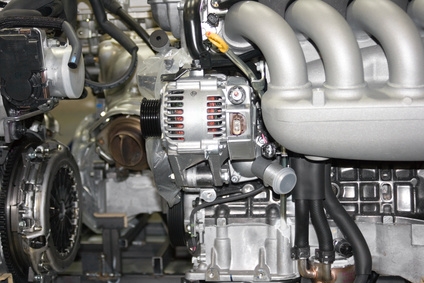
The intake manifold delivers the fuel-air mixture to the combustion chambers. It runs from the carburetor to the cylinder head. A thin gasket made of cellulose nitrate or a rubber-fiber material seals the cylinder head to the intake manifold. The gasket must not only seal the joint, it must also provide insulation between the hot engine block and the intake manifold. Engines run best on cold air. If heat from the engine block seeps up into the intake manifold, it will degrade performance. Replacement can only take place after the cylinder head is removed.
Use the appropriate size socket to remove the intake manifold.
Scrape the remnants of the old gasket from the surfaces of the cylinder head and engine block. Separating the head and block destroys the old gasket.
Clean the cylinder head flanges and the engine block end-seal services.
Apply gasket sealant to the cylinder head flanges and the cylinder-head side of the gasket. Allow it to air dry. Attach the intake gaskets.
Apply a quarter-inch bead of silicone sealer across each block end-seal surface. Overlap the intake gasket at all four corners. This will eliminate end-seal slippage.
Install the manifold and tighten down the hold-down bolts. If your engine was built before 1995, put a small amount of silicone on the threads of the eight inner bolts. These are not blind holes; they must be sealed. Torque all the bolts to the amount of torque specified in the intake manifold manufacturer's instructions. Usually the manufacturer recommends tightening the bolts in stages.